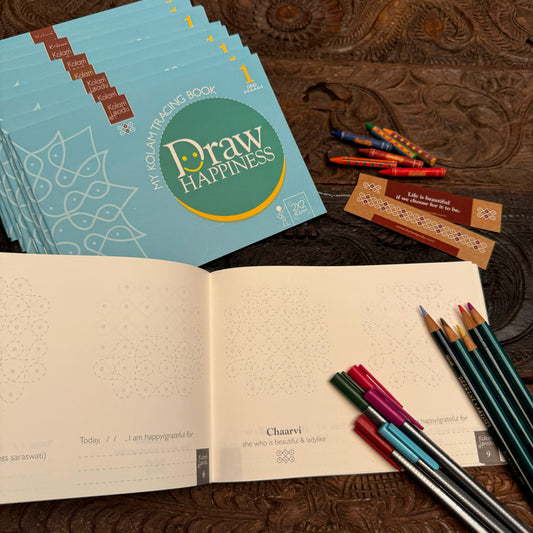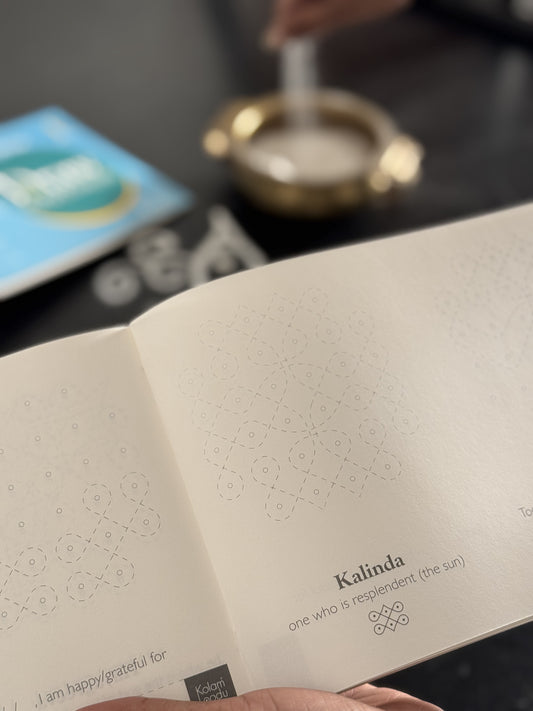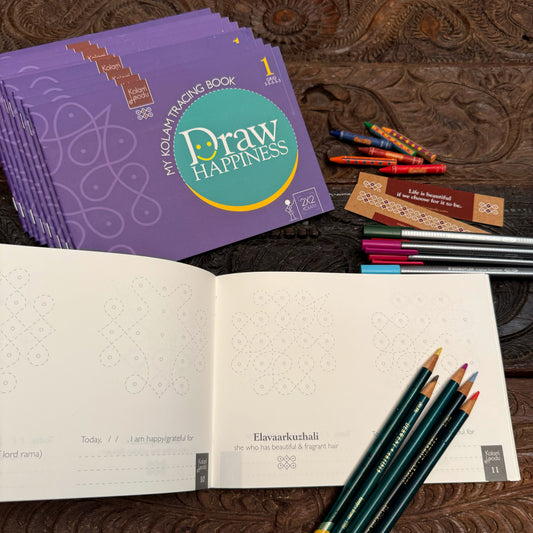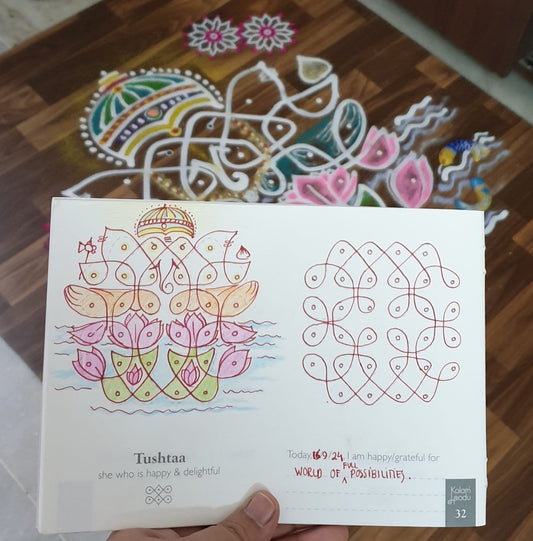Discover the rich cultural tapestry of South India through the traditional art of Kolam. This intricate floor art, known as Muggulu, Rangavalli, Kolam, or Rangoli, goes beyond decoration. It's a symbol of welcoming, a daily ritual with spiritual significance, a celebration of heritage, and a communal bond. Kolam is not just art; it's a way of life that blends creativity, mindfulness, and devotion. Join us on a journey through the cultural heart of South India with Kolam.
Kolam is a traditional form of art that is practiced in South India which holds significant cultural importance. Widely practiced in states like Tamil Nadu, Karnataka, Andhra Pradesh, and Kerala, it goes by the names Muggulu, Rangavalli, Kolam and Rangoli. It is a decorative floor art form created by drawing intricate patterns on the ground using rice flour, colored powders, or flower petals.
There are many kinds of Kolams. And what separates a traditional kolam to the popular rangoli is the emphasis on symmetry.
Kolam, particularly in South India, where it is deeply ingrained in the daily lives and traditions of the community holds key cultural significances such as:
1. Symbol of Welcoming and Invitation: Kolams are often drawn in front of homes, serving as a welcoming gesture to both guests and deities. They are believed to invite positive energies, prosperity, and good luck into the household. Kolams are also created during festive occasions and celebrations as a way to mark the special event and create an inviting ambiance.
2. Ritualistic Practice: Kolam-making is often performed as a daily ritual, primarily by women in the family. It holds spiritual significance and is considered a form of devotion and offering to deities. The act of creating kolams is believed to bring blessings, divine protection, and spiritual purity to the household.
3. Cultural Identity and Heritage: Kolam is an integral part of South Indian cultural identity. It has been passed down through generations, with unique designs and patterns reflecting regional and community-specific styles. Creating and appreciating kolams helps preserve and celebrate cultural heritage, reinforcing a sense of belonging and pride.
4. Social Cohesion and Community Bonding: Kolam-making is often a shared activity within the community. Women gather together to draw kolams, exchanging ideas, techniques, and designs. This communal aspect of kolam fosters social cohesion, strengthens bonds, and promotes a sense of unity among neighbors and community members.
5. Artistic Expression and Creativity: Kolam is a form of artistic expression that allows individuals to showcase their creativity and imagination. Within the boundaries of traditional designs, kolams offer space for personal interpretation and unique variations. This artistic aspect of kolam provides an outlet for self-expression and encourages creative exploration.
6. Educational Value: Kolam-making is also seen as a form of informal education, especially for younger generations. Children learn about geometric patterns, symmetry, and spatial awareness through observing and participating in the process. Kolam serves as a cultural teaching tool, transmitting knowledge, and skills from one generation to the next.
7. Mindfulness and Contemplation: Creating kolams requires focus, attention to detail, and patience. The rhythmic and repetitive nature of drawing intricate patterns promotes a state of mindfulness and contemplation. It serves as a meditative practice, allowing individuals to experience inner calmness, relaxation, and mental clarity.
It represents a blend of cultural heritage, artistic creativity, and devotion, contributing to the cultural fabric and social cohesion of South Indian communities.
Life is beautiful if we choose for it to be. Let's draw happiness!







